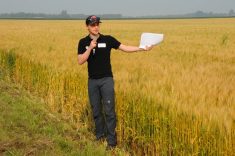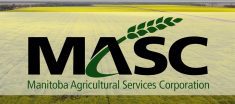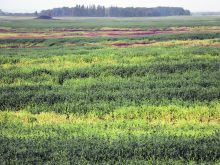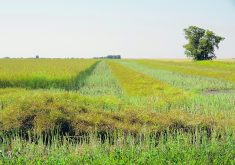Results for 2023 not official yet, but anecdotal reports and gov’t estimates suggest average yield in high 40s is possible
WINNIPEG — The numbers are not official, but Manitoba farmers might set a new record for canola yields in 2023.
The record for Manitoba was established in 2017, when the provincial average was 47 bushels per acre. That number comes from Yield Manitoba, a publication of the Manitoba Agricultural Services Corp., the provincial crop insurer.
The new issue of Yield Manitoba is scheduled to come out in the next month, so the average yield for 2023 is not public. Nonetheless, anecdotal reports and Manitoba Agriculture estimates suggest that an average yield in the high 40s is possible.
Read Also

Drones now used to assess wildlife crop damage in Saskatchewan
Wildlife damage in Saskatchewan crops is now assessed by drones and artificial intelligence.
The 10-year average for canola yields in Manitoba is 40 bu. per acre.
Pam Bailey, Manitoba Canola Growers Association president, said it’s difficult to gauge yields based on coffee shop chatter.
Some people tell stories about 100 bushel yields, while another will say they produced 20 bu. per acre.
“It’s hard to judge on those conversations. I think it was average to better than average,” said Bailey, who farms west of Winnipeg near Dacotah.
“It was a nice relief to farmers (to achieve solid yields).”
In October, the final Manitoba Agriculture crop report for 2023 pegged the provincial average at 42 bu./acre.
That number could be low.
The same provincial crop report said multiple regions of Manitoba had excellent canola yields:
- In eastern Manitoba the average yield was pegged at 55 bu.
- Interlake yields averaged 45 to 65 per bu.
- In the northwest, higher yielding fields had 65 to 70 bu. per acre
Data from Pioneer and its Yield Hero Contest shows that canola growers in Roblin, Rathwell, Niverville, Laurier and Headingley achieved yields from 65 to 75 bu. per acre.
The Rural Municipality of Headingley is located immediately west of Winnipeg and anecdotal reports from the recent Manitoba Ag Days farm show in Brandon suggest canola yields across the RM were higher than 60 bu. per acre.
Again, the provincial average may not have set a record in 2023, but it’s a safe bet that cooler weather in July contributed to the better-than-average yields.
Using Dauphin as an example, there were only two days in July where the temperature exceeded 30 C, using Environment Canada data.
In addition, on 14 nights in July the temperature dropped below 10 C, which helps canola recover from daytime heat and reduces the number of flowers that are aborted.
“We did have that cooler July, which was delightful for a lot of crops,” Bailey said.
The longer bloom period was beneficial for many growers, but canola yields were below average in parts of the province.
Central Manitoba seemed to miss every thunderstorm and rainfall during the first couple of months of the growing season. Canola yields in places like Carman and Gladstone may be in the high 30s and low 40s.
Some growers also struggled with combining canola last fall, with “plant stalks remaining green, making harvest a much slower process,” Manitoba Agriculture said.
















